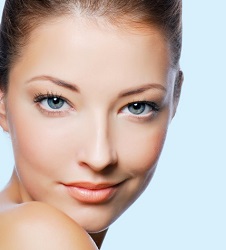Heal Your Skin with Laser Energy

Having flawless skin isn’t easy. The aging process, long periods of exposure to heavy sun, and clogged pores can all leave your skin feeling dull and lifeless. This is when skin resurfacing techniques come in handy. One of the most common types of skin resurfacing techniques is laser skin resurfacing.
The Skin Conditions That Can Be Corrected Using Laser Skin Resurfacing
This skin-healing method can be used for:
- Aging signs like fine lines, wrinkles, and loss of skin elasticity
- Skin pigmentation and blotchy skin
- Uneven skin tone and rough skin
- Sun damage
- Age spots
What Are the Benefits This Method Offers?
- The results of this treatment are instant and long lasting.
- Skin elasticity improves, making the skin tighter, firmer, and smoother.
- The skin texture visibly improves after the treatment.
- It can improve severe skin conditions that can’t be healed by other normal skin-rejuvenation methods.
- Skin on the hands, neck, face, and chest can all be treated with laser skin resurfacing.
- Deeper layers of the skin produce more collagen after the treatment, resulting in making your skin healthy for a long time after the treatment.
Laser Skin Resurfacing – What to Expect During the Procedure
This cosmetic procedure involves the use of laser energy to target the skin layers and heal the damage in skin cells. As the name indicates, the laser resurfaces the skin and brings out the younger and fresher skin cells, leaving you feeling bright and young naturally.
During treatment, a protective eye mask is used so as to shield the laser beam from the eyes. The probe that emits the high intensity laser beam is focused on the area being targeted. Due to the intensity of the rays, very brief pulses are directed on the skin. The skin layer being focused on and the depth of penetration vary depending on the skin problem being addressed.
There could be fractional lasers and ablative or non-ablative lasers used during the treatment depending on the desired results. Typically, the outer layer of the skin is damaged in order to facilitate the production of new and healthy skin cells that give a natural young look.
A typical session, if the treatment is on one area of the skin, would take half an hour to 45 minutes. To avoid discomfort, local anesthesia is given. For an intense treatment, for larger areas, the sessions might be longer and general anesthesia might be administered.
After the Procedure
The procedure does not require hospitalization or monitoring afterwards. The treated area might be given a mild dressing, which can be removed after a day. There might be mild redness and inflammation. You may be given medication to combat swelling, along with ointment for the treated area to prevent drying of the skin and scab formation.
Set Up a Consultation
Schedule a consultation with Dr. Burke Chegar for more on the impressive effects of laser skin resurfacing. Dr. Chegar is double-board-certified in Facial Plastic and Reconstructive Surgery and Otolaryngology. Contact us today to get started!
